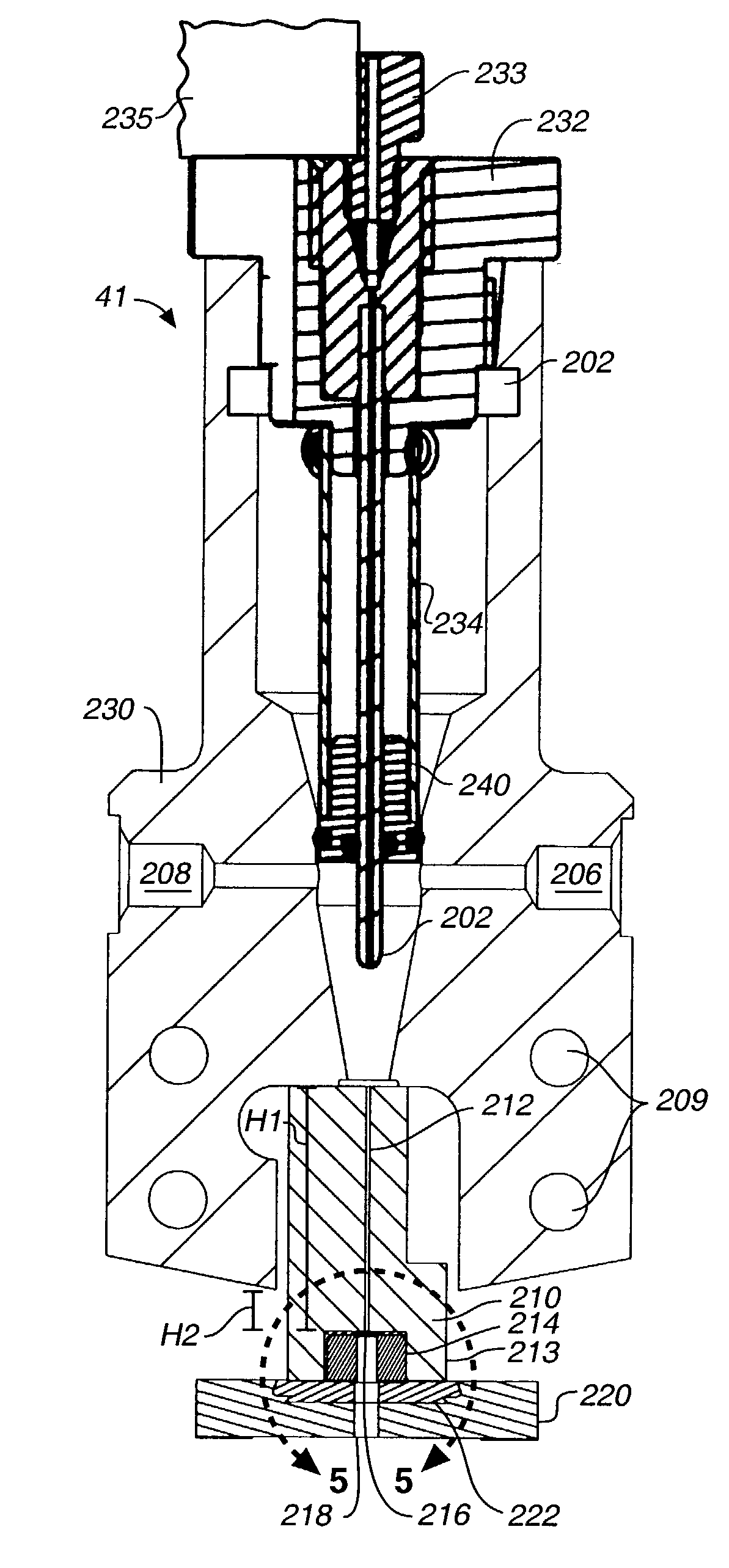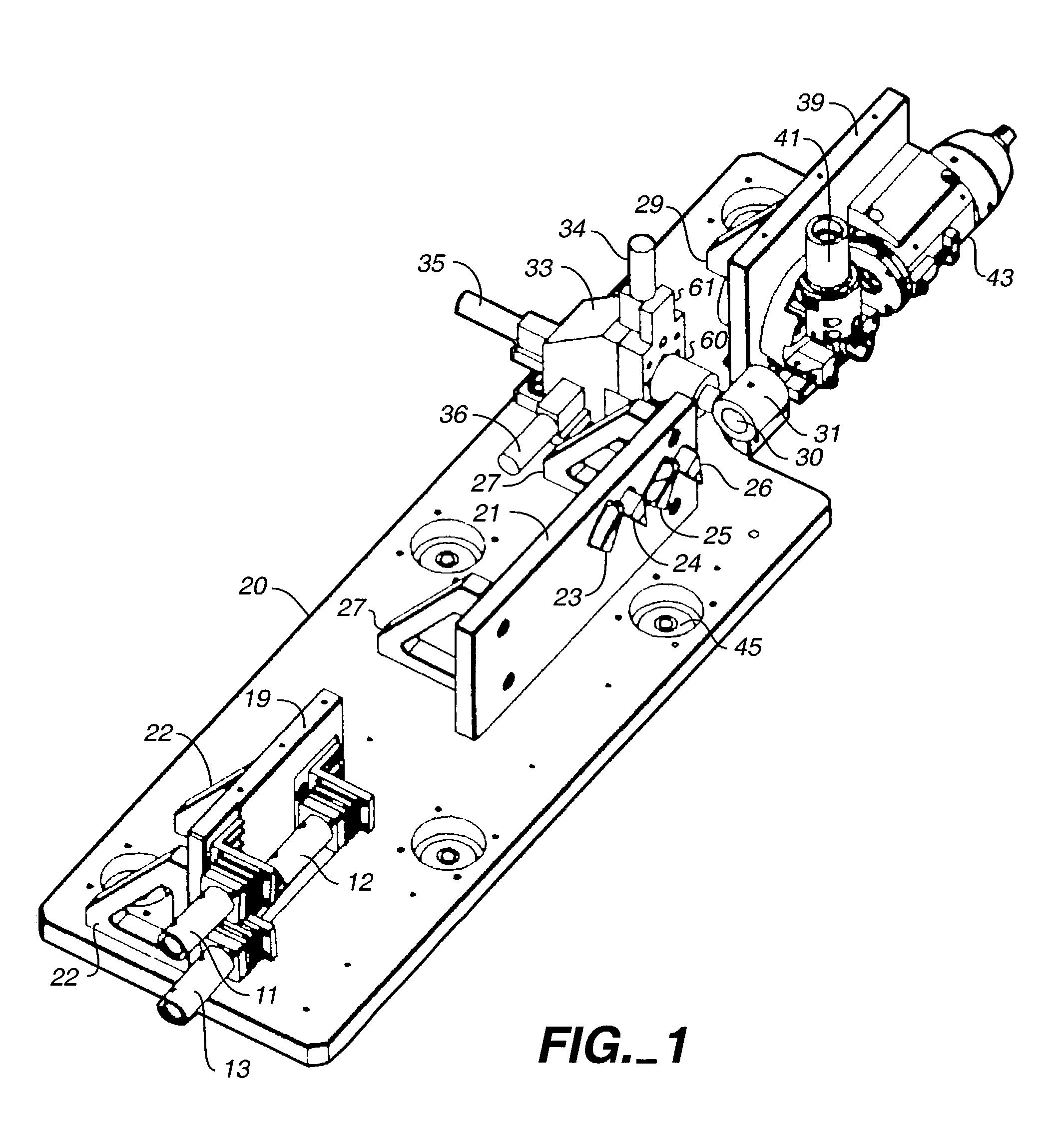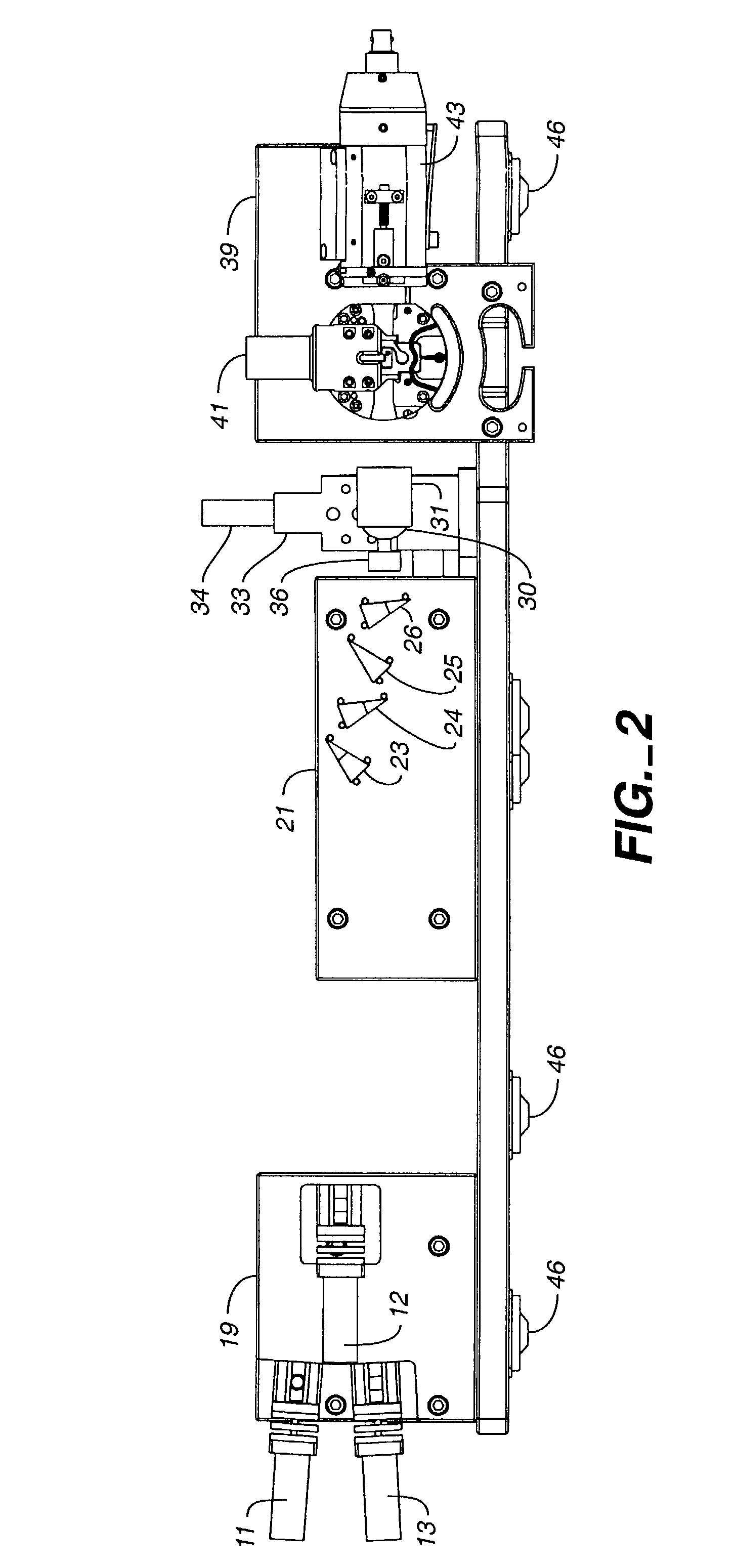Fixed mounted sorting cuvette with user replaceable nozzle
a technology of user-replaceable nozzles and sorting cuvettes, which is applied in the field of flow cytometry, can solve the problems of difficult to determine which elements require adjustment, the number of system limitations exist, and the alignment requires user time and considerable user expertis
- Summary
- Abstract
- Description
- Claims
- Application Information
AI Technical Summary
Benefits of technology
Problems solved by technology
Method used
Image
Examples
Embodiment Construction
[0068]In the present invention, significant advantage is derived from a configuration in which a number of the optical elements may be fixed with respect to the flow cell. This advantage arises from the extent of directional stability afforded by the nozzle, which the user may remove and replace and which is self-aligning. The nozzle is insertable in the flow cuvette at a location where the nozzle is registered in place. This registration allows the nozzle to be inserted and positioned such that the nozzle is constrained both as to translation and rotation. Because only the nozzle is movable, the flow cell may be fixed, and does not need to be positioned on a stage that may be angularly or directionally repositioned. As a result, no removal or replacement of the flow cell is required and the user will not have to adjust or realign the flow cell assembly to align the stream of droplets with a required direction for sorting.
[0069]Because the flow cell and flow channel never need to be...
PUM
| Property | Measurement | Unit |
|---|---|---|
| length | aaaaa | aaaaa |
| length | aaaaa | aaaaa |
| size | aaaaa | aaaaa |
Abstract
Description
Claims
Application Information
 Login to View More
Login to View More - R&D
- Intellectual Property
- Life Sciences
- Materials
- Tech Scout
- Unparalleled Data Quality
- Higher Quality Content
- 60% Fewer Hallucinations
Browse by: Latest US Patents, China's latest patents, Technical Efficacy Thesaurus, Application Domain, Technology Topic, Popular Technical Reports.
© 2025 PatSnap. All rights reserved.Legal|Privacy policy|Modern Slavery Act Transparency Statement|Sitemap|About US| Contact US: help@patsnap.com



